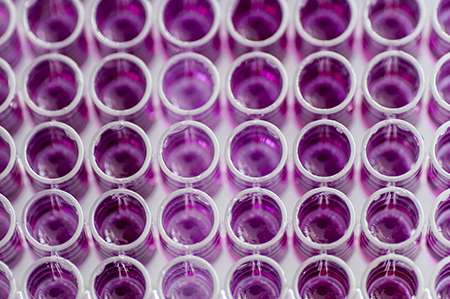Cell behaviour in low oxygen conditions mapped

(Phys.org) —Research at the University of Liverpool has explained how cells behave when placed in a low oxygen environment, a development that could have implications for cancer patients and other serious illnesses.
The research opens up the possibility of controlling the signals that keep cells alive, preventing the damages caused by ischemia – a restriction of blood supply to tissues. It could also work to help destroy cancer cells.
When the body is deprived of adequate oxygen supply it is known as hypoxia and can cause the death of cells. This occurs in patients suffering from 'ischemia', which can lead to gangrene or paralysis.
A reduction in oxygen levels, such as that used in the new study and which mimics the situation in a tumour, causes cells to adapt to the new environment and become resistant.
The researchers from the Institute of Integrative Biology in collaboration with researchers from the Department of Mathematical Sciences at the University, subjected cells to conditions with only 1% oxygen for 20 hours, and imaged the cellular response in real-time. They then mathematically modelled the profile of the proteins which conveyed instructions telling the cells how to behave.
It has not been established before why some cells died and others lived under low oxygen conditions, but by monitoring the levels of proteins in the cells and observing how they influenced genes switching on in the cells, the researchers were able to determine the optimum conditions for keeping cells alive.
Cell biologist, Dr Violaine See, who led the project, said: "These findings could have important consequences for how we understand tumours, which are hypoxic because of the rapid cell growth which outpaces their blood supply."
The study was published in the Journal of Biological Chemistry and was funded by the Biotechnology and Biological Sciences Research Council (BBSRC).
More information:
James Bagnall, Joseph Leedale, Sarah Taylor, David G. Spiller, Michael R. H. White, Kieran J. Sharkey, Rachel N. Bearon, and Violaine See
"Tight control of Hypoxia Inducible Factor (HIF)-alpha transient dynamics is essential for cell survival in hypoxia." J. Biol. Chem. jbc.M113.500405. First Published on January 6, 2014, DOI: 10.1074/jbc.M113.500405
Journal information: Journal of Biological Chemistry
Provided by University of Liverpool
















